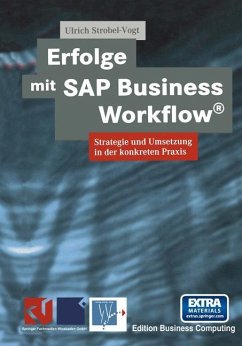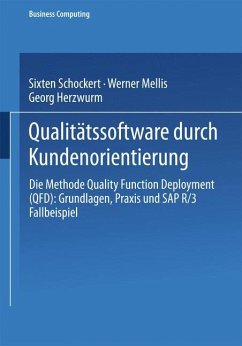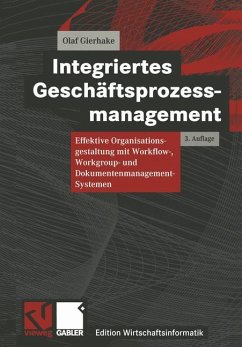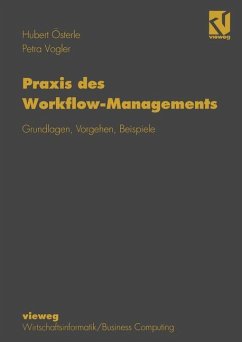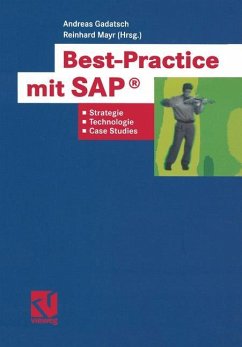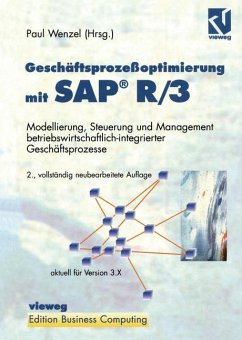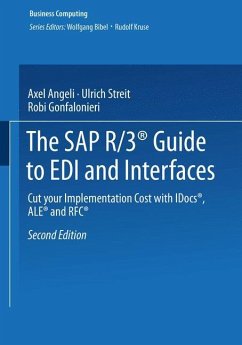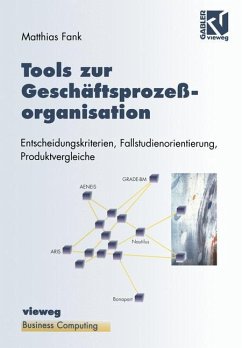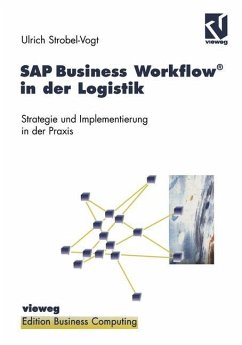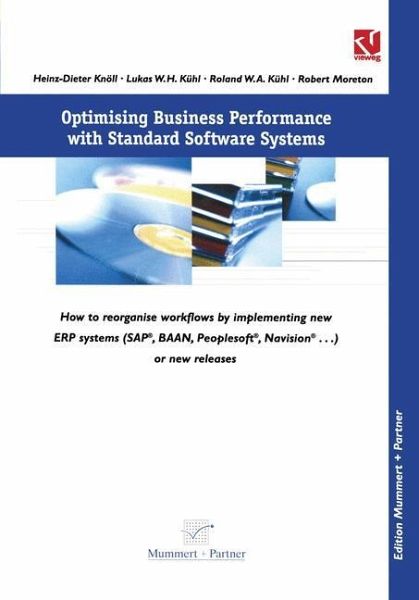
Optimising Business Performance with Standard Software Systems
How to reorganise Workflows by Chance of Implementing new ERP-Systems (SAP®, BAANTM, Peoplesoft®, Navision® ...) or new Releases

PAYBACK Punkte
38 °P sammeln!
Preface In recent years Standard Software has evolved from a tool for supporting commercial/administrative activities (e.g. financial ac counting) to integrated systems that cover entire business proc esses in companies. The rapid development of these systems, an increasing number of implementations, and the suppliers' an nouncements concerning the functional extension of their sys tems lead us to expect a further market penetration of Standard Software. SAP's Industrial Solutions, for instance, which are of fered for the key processes of entire lines of business demon strate the impressive su...
Preface In recent years Standard Software has evolved from a tool for supporting commercial/administrative activities (e.g. financial ac counting) to integrated systems that cover entire business proc esses in companies. The rapid development of these systems, an increasing number of implementations, and the suppliers' an nouncements concerning the functional extension of their sys tems lead us to expect a further market penetration of Standard Software. SAP's Industrial Solutions, for instance, which are of fered for the key processes of entire lines of business demon strate the impressive success of Standard Software Systems. The widespread implementation of commercial Standard Soft ware has reqUired considerable investments by industrial and service companies. Now it is time to verify if the planned gains and advantages of these systems have actually been realised, i.e. one has to ask whether the systems payoff as originally ex pected. It has to be kept in mind that the vendors have promised far-reaching optimisation of their clients' business processes by means of the so called best-practice reference processes implied by their systems. The advantages of these best-practices should have been incorporated in the processes of the respective com panies. On closer inspection, one can see that the claimed advantages of the systems' capabilities in terms of optimised processes have not been realised in many of the current implementations. Studies and interviews undertaken with applying companies as part of the research for this book confirm this finding.



